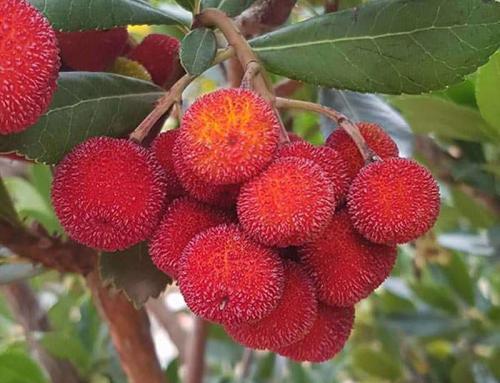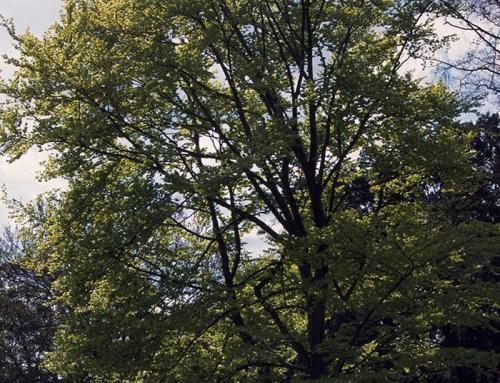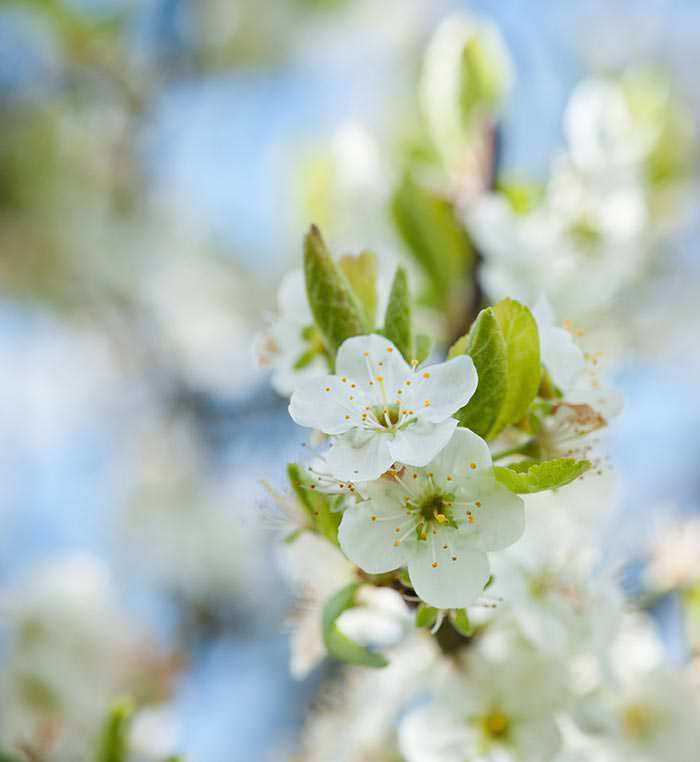
Plum Fruit trees are popular for their striking spring flowers and tasty fruit. Pictured here is River’s Early Prolific in bloom.
The Prunus Domestica is a family of fruit trees better known as plum trees, though not all plum varieties belong to this specific family. Exceptionally showy in the spring and with delicious fruit in the summer or autumn, plum trees keep on giving throughout the year and ask very little in return. We offer plum trees for sale in various sizes and bearing different types of fruits, all of which are fully hardy and suited to growing in the United Kingdom climate.
Plum Fruit trees are typically small to medium-sized deciduous cultivars, which makes them well suited for gardens of any size. You can choose to grow a single fruit tree as a specimen tree for a compact space, or plant them en masse, for an abundant fruit production and masses of delicate blossoms in the spring.
Plum trees produce oval, juicy fruit with a stone inside, and most varieties are sweet and tasty whether eaten freshly picked from the tree or cooked in compotes or preserve. Some varieties can be slightly tart, such as damson plums, and are usually used only for jams and jellies. When it comes to storing excess fruit, most plums freeze well or can be dried if you like prunes. Plums are rich in vitamins C and K and are an excellent source of potassium and fiber: not only that they taste heavenly, but they are also the perfect healthy treat.
In terms of care, plums do not require much to thrive. Plant your tree in a spot in full sun and well-drained soil, preferable fertile. Although plums tend to be hardy and robust, all varieties will appreciate a sheltered position in the garden, where their delicate blossoms would be away from harsh, cold winds.
Origin and History
Plum trees are thought to be one of the first fruiting trees ever to be domesticated and cultivated by humans. The species are native to Western Asia, or, more specifically, a region where Caucasus mountains meet the Caspian sea. Naturally, we do not know for sure how long plum trees have been cultivated, but remains of this stone fruit have been found in Neolithic age archaeological sites, and some scholars claim that Mongols and Huns considered prunes a staple in their diet.
In the United Kingdom, plum trees have a long history as one of the most treasured fruit trees. Apart from adding striking appearance to the landscape, many plum varieties are grown solely for the fruit they produce. Sweet, tart, dessert, or culinary: each plum fruit has its own merit, but which one is the best fit for your needs?
Which Variety of Plum To Choose?
At first glance, plum varieties are very similar. All plum trees produce a prolific display of tiny white blossoms with a pleasant scent, and all are relatively small in size: Prunus Domestica cultivars rarely grow over 4 metres in a period of 10 years. But, their similarities end in time for harvest, as not only do plums differ in taste and appearance, but they also ripen at different times of the year. Depending on both your individual taste in fruit and the time of year when you want to pick the plums, you can choose between early, mid-season, and late season plum trees.
Even though picking seasons remain unchanged regardless of where you live in the United Kingdom (though weather conditions might move the harvest a few weeks up or down), in areas prone to late frosts, we recommend additional protection for early plum trees, which blossom early in the spring.
Plum trees are, in most cases, self-sterile. This means that these fruiting trees rely on a cross-pollinator (different plum variety planted nearby) for fertilization. To ensure your plum tree produces a good crop of fruit, plant it alongside one of its pollination partners.
Early Season Plum Trees for Sale
These fruiting trees flower early in the spring and the plums that follow can be harvested in July.
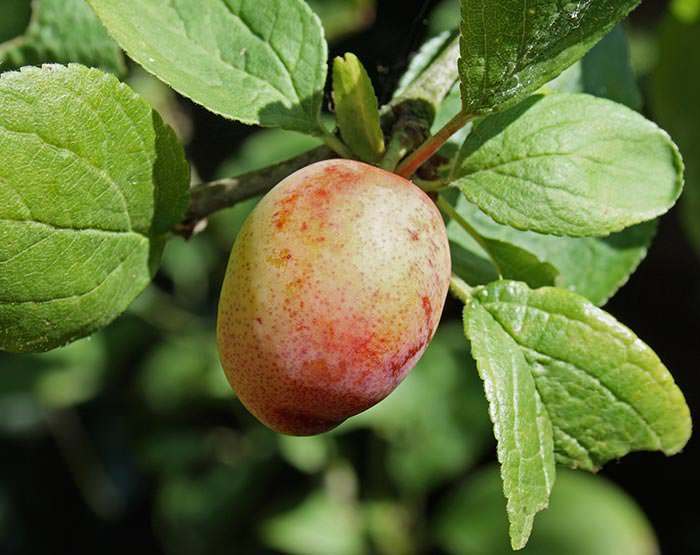
Plum Trees for Sale – Prunus Domestica Early Laxton is a productive early fruiting variety
The reddish-yellow freestone plums have juicy flesh with a refreshingly sweet flavour. This is a very productive cultivar with crops that can be used for eating as well as in preparation of various preserves.
A cross between a gage and plum, this reliable variety produces heavy crops of appetizing dual-purpose fruit. Opal plum tree has an RHS Award of Garden Merit and Perfect for Pollinators badge.
River’s Early Prolific Plum Tree
First selected in the United Kingdom, this native variety produces a heavy crop of freestone fruit, particularly suited for jams and jellies. This variety received RHS Perfect for Pollinators badge.
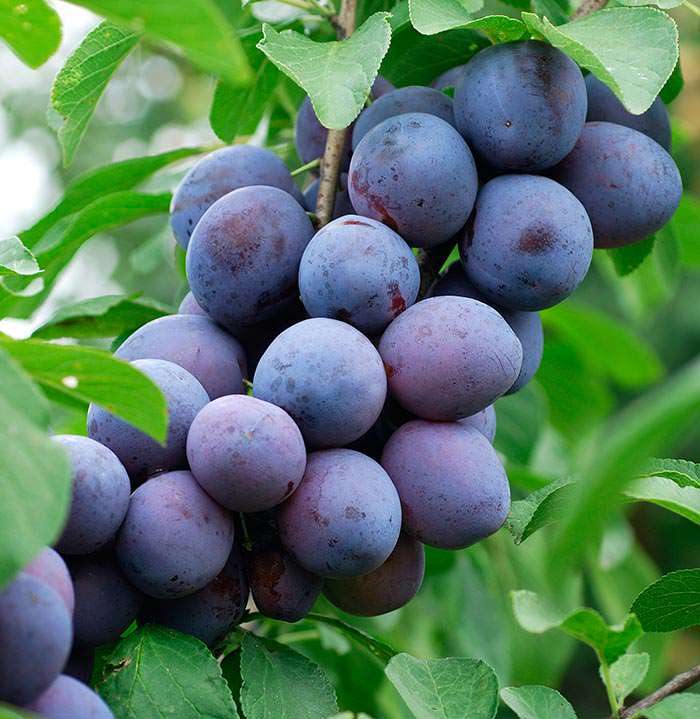
The Czar is one of the best varieties of plum trees for jams and jellies, due to its firm flesh and slight tartness.
With firm and tart fruit, this culinary plum variety is ideally suited for jams and jellies, but it can be eaten fresh as well, if you prefer an acidic note to your fruit. A reliable cultivar, The Czar received RHS Award of Garden Merit and Perfect for Pollinators Badge.
Mid-Season Plum Trees for Sale
These plum trees ripen throughout August.
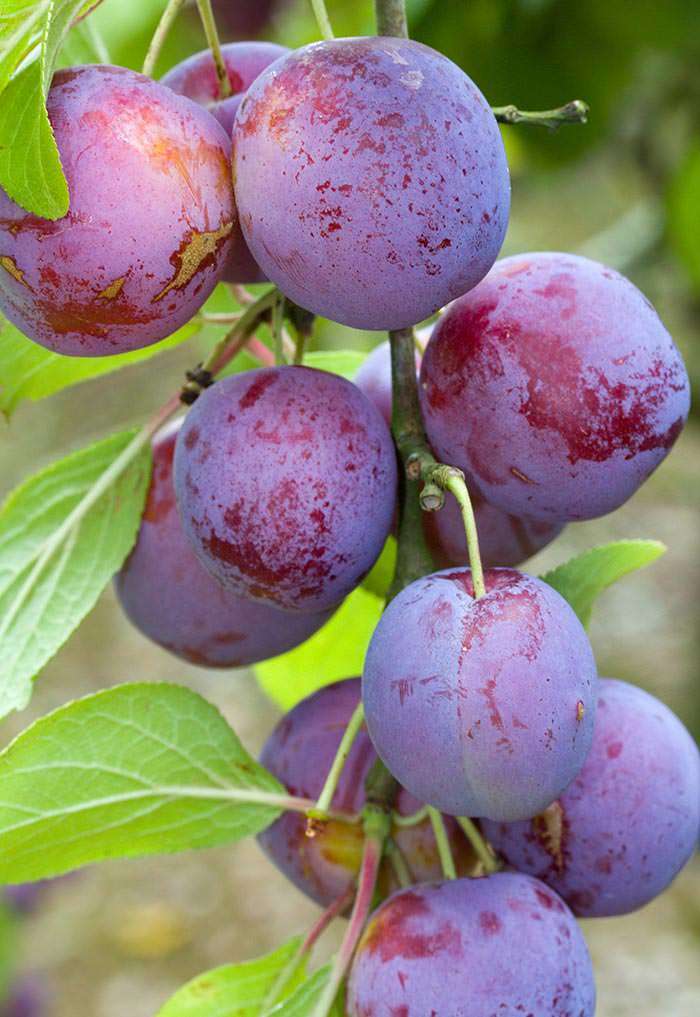
Plum Trees for Sale – Prunus Domestica Excalibur produces large plums with good flavour.
This is an exceptionally sweet plum that ripens at the end of summer, and can be enjoyed as a dessert fruit or made into jams and jellies.
The large, yellow plums this variety produces have golden flesh with a particularly sweet flavour and stone that separates easily from the fruit. Dual-purpose, these plums can be used both as dessert and culinary.
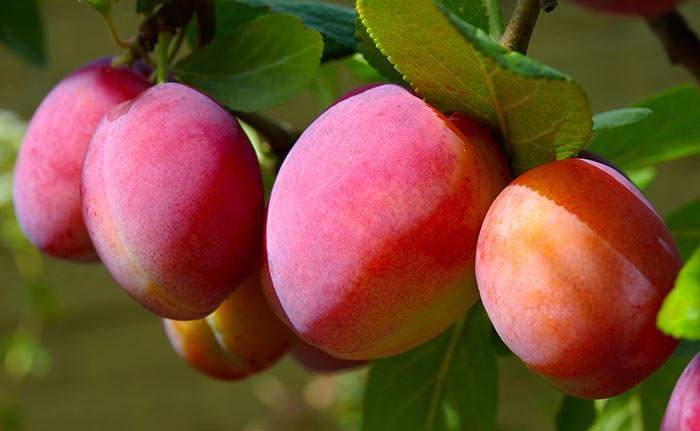
First selected in the UK, Victoria Plum is one of the most popular varieties.
A UK native and the winner of the RHS Award of Garden Merit and Perfect for Pollinators badge, this treasured plum tree is best known for its sizeable juicy fruit that tastes especially good when cooked, though it delicious when freshly picked, too.
Late Season Plum Trees for Sale
Plums in this group should be picked in September.
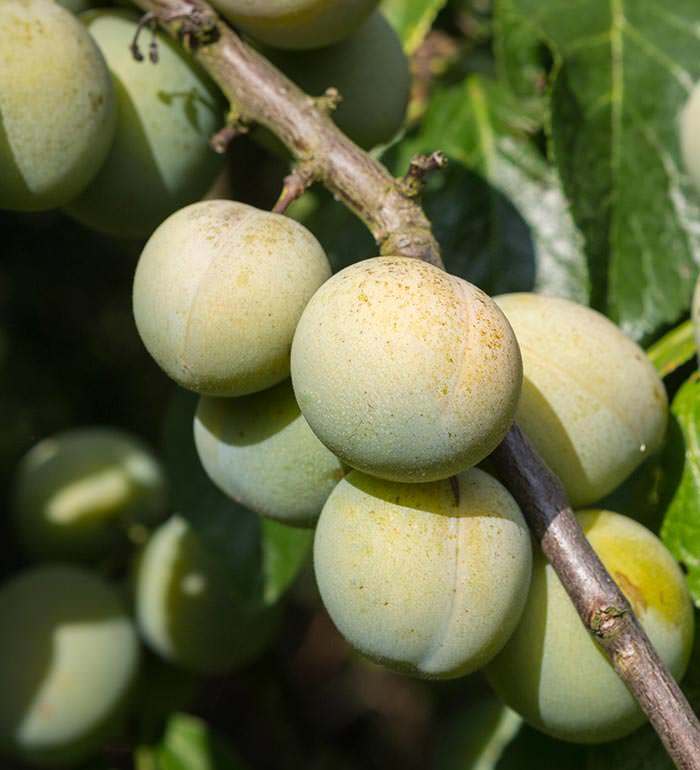
Plum Reine Claude Verte is a greengage plum variety with a rich, confectionery flavour.
This greengage plum variety is almost an unchanged form of its ancestor and produces juicy and sugary fruits.
A winner of the prestigious RHS Award of Garden Merit, this Canadian plum is freestone and loved for its sweet juicy flesh.
Plum Domestica Mirabelle de Nancy
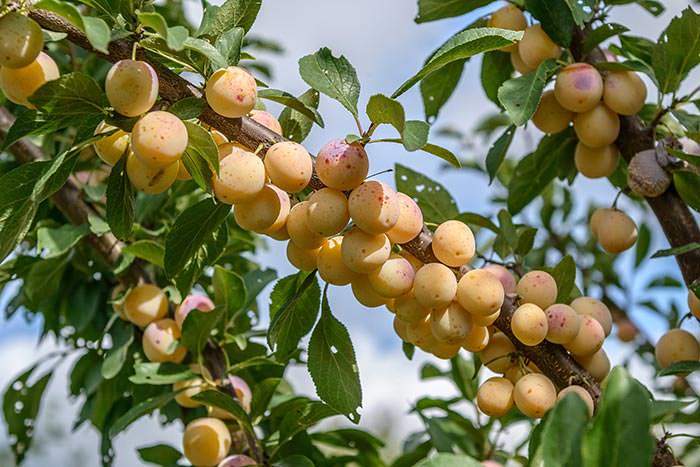
Mirabelle plums are subspecies of Prunus Domestica, and this heritage variety is excellent for jams, eau de vie, and other French delicacies.
A heritage fruiting plum that originated in France, this variety of Mirabelle plums is prized for masses of golden yellow fruit it produces. The stone-free plums are ideal for cooking, especially as filling for French pastries.

